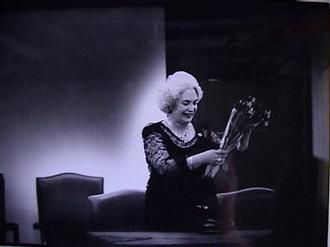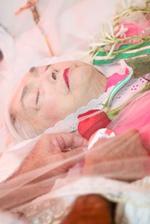Category Archives: The Forum
Environmental destruction: Puerto Rican trans-island natural gas pipeline
The Puerto Rican Government, under the auspices of the Authority for Electrical Energy, has fast-tracked a trans-island natural gas pipeline. The project is called Via Verde (The Green Way, in English). The pipeline will be 146 km long and rest on a 100 foot wide corridor. The proposed route cuts through a number of forest ecosystems and protected habitat, and threatens to displace hundreds of residents. This is essentially being done by decree, using Eminent Domian laws (as in Kelo v. City of New London). The damage will be major, as the attached evaluation shows.
Casa Pueblo of Adjuntas, Puerto Rico, is a community organization at the forefront of a growing popular movement to oppose the pipeline. The organization has a history of popular direct action beginning in the 1970’s when they led an island-wide movement opposing, and preventing, strip-mining in the region by Alcoa and other mining multinationals.
The Puerto Rican government claims the pipeline will reduce costs to the consumer but this has been challenged by University of Puerto Rico studies, as outlined in the attached. The plant that is to supply the natural gas was owned by Enron before it went bankrupt. This is significant because a pattern of monopoly control over the power grid is shaping up reminiscent of the situation in the 2000-2001 California Electrical Crisis.
The attached document (Spanish and English translated versions) also makes a powerful argument for a public policy in Puerto Rico promoting renewable photovoltaic energy and energy conservation. This is a well-researched plan with attainable goals. It would also make the pipeline redundant.
Please read the attached. It is 6 pages long, and we are working on a more stream-lined press release, but this evaluation contains the full scientific and economic arguments. I will send some recent press in Spanish and English. Here is a link to one article in Spanish. http://www.elnuevodia.com/uncrimenambientalelgasoducto-761375.html We are just getting started, but time is of the essence here. As in previous cases, the government and the multinational corporations with vested interests would like to ramrod this through with shock and awe techniques before we can mount a popular defense.
I urge you to look closely at this crisis situation and make efforts to report on and raise awareness about it. Please circulate this and help us get the word out. We need to put the spotlight on this environmental disaster in the making called Via Verde.
Please visit www.casapueblo.org or contact me for more info. I am in the process of building a dedicated page for information updates.
Thank you,
Alex Wolfe
Remembering Lolita Lebron – The BBC’s “Last Word” radio program
Lolita Lebrón
Puerto Rican nationalist who has died aged 90. LISTEN TO THE REPORT Lolita Lebron Obit on BBC Radio 8-6-10
Lolita Lebron did not expect to live beyond March 1st 1954. That was the day she led a gun attack on the US House of Representatives which wounded several congressman and saw her jailed for the next 25 years. The former beauty queen from the island of Puerto Rico soon became the poster woman for the nationalist struggle to gain independence from the US and she is often now compared to the revolutionaries Che Guevara and Pancho Villa.
Jane spoke to one of her co-activists who took part in the attack in 1954, Rafael Cancel Miranda, and to Angelo Falcon of the National Institute for Latino Policy.
Dolores “Lolita” Lebrón was born 19 November 1919 and died 1 August 2010
Lolita Lebrón abogó por la lucha por la independencia sin violencia en una de sus últimas entrevistas
Por Iñaki EstÃvaliz/Inter News Service
San Juan, 1 ago (INS).- La lÃder nacionalista Lolita Lebrón, quien murió hoy a los 89 años de edad y que cumplió 25 años de prisión por participar en un asalto al Congreso de los EEUU en 1954, mantuvo hasta sus últimos años de vida la esperanza de ver a Puerto Rico independiente, pero usando un mensaje de rechazo a la violencia.
En una de las últimas entrevistas que concedió, el 22 de septiembre de 2006, Lebrón apostó porque los independentistas conmemorarÃan de forma “ordenada y sin violencia†al dÃa siguiente la significativa fecha conocida como el Grito de Lares, que aquel año coincidÃa con el primer aniversario de la muerte a manos del Negociado Federal de Investigaciones (FBI) de Filiberto Ojeda RÃos, comandante del Ejército Popular Boricua-Macheteros.
La única mujer entre los cuatro independentistas que el 1 de marzo de 1954 irrumpieron a tiros en el Congreso de Estados Unidos e hirieron de bala a tres legisladores aseguró entonces que “mañana vamos como somos, gente decente, ordenada y que no quiere la violencia. La colonia es la violenciaâ€.
En el Grito de Lares se conmemora el levantamiento armado contra España en 1868 y el año 2005, durante la celebración, agentes del FBI atacaron la residencia clandestina en Hormigueros del izquierdista Ojeda RÃos, de 72 años y uno de 10 los fugitivos más buscados por EEUU hasta entonces. “Nosotros vamos a cumplir con nuestro deber y a renovar nuestros votos por la liberación nacional del pueblo de Puerto Ricoâ€, insistió la nacionalista en su casa de Guaynabo, donde colgaban fotografÃas suyas de su juventud, en la que exhibÃa una belleza arrebatadora de actriz de cine.
En una de las habitaciones habÃa levantado una especie de santuario católico donde todos los dÃas oraba por la juventud puertorriqueña. “Nuestra estrategia liberadora es una estrategia de pazâ€, aseguró Lebrón, quien cumplió en prisión “25 años, seis meses y nueve dÃas†hasta que fue indultada en 1979 junto a Rafael Cancel Miranda, Irving Flores y Andrés Figueroa Cordero por el presidente Jimmy Carter como secuela de una intensa campaña internacional.
La nacionalista puertorriqueña indicó que en Lares “se forjó la cuna de nuestra patria†y dijo que ciertas “visitas†del FBI a casas de independentistas y el “asesinato†de Ojeda RÃos tuvieron la intención de “meterle más miedo al pueblo, pero los que somos fieles a la causa estaremos allÃâ€. “No soy una revolucionaria de ir a matar a nadie, yo creo en la paz, yo creo que podemos hacernos libres y que nos vamos a hacer libres sin necesidad de hacer una revolución armadaâ€, subrayó.
“No estamos arrepentidos (de los actos armados), estamos contentos, pero desde mi perspectiva, creo que no debemos ahora hacer esa estrategia sino tener otra para el momento que vivimos ahora en el siglo XXIâ€, añadió. Defendió el derecho de soberanÃa de todos los pueblos y que “la colonia está ya en agonÃaâ€, pues el gobierno local, entonces con AnÃbal Acevedo Vilá como gobernador, está “entregado a un imperio†mientras crecen “la corrupción y el desordenâ€.
Que se sepa hasta el momento, Lebrón no pudo cumplir uno de sus últimos sueños, que le dio energÃas y fuerza para sobrevivir sus últimos años: hacer público un libro en el que habÃa escrito las “revelaciones†que Dios le habrÃa hecho en la cárcel y en el que, entre otras cosas, le pretendÃa explicar al ex presidente de EEUU, George W. Bush, “lo que es terrorismoâ€. “La violencia hay que borrarla de la faz de la tierra… toda, la institucionalizada y todas las demás. No es que yo no tire una piedra, yo no debo tirar la piedra, pero nadie debe tirar en absoluto nada contra nadieâ€, pensaba.
Criticó que en el último informe de la Casa Blanca sobre el estatus polÃtico de Puerto Rico se afirmara que EEUU puede ceder la isla a cualquier otro paÃs “como si fuéramos cerdosâ€, lo que supone un abuso a la dignidad: “nadie nos puede entregar a nosotros a nadieâ€. Su fe le sirvió para sobrevivir a la pérdida de “todos mis hijosâ€: “a un mes del asalto al Congreso murió ahogado mi hijo de once años y mi madre murió desgarradaâ€.
Lebrón concedió en exclusiva aquella entrevista a cambio de que se mencionara su “agradecimiento eterno†al grupo de unas cuarenta “madrecitas†que la cuidaron durante su recuperación de un ataque al corazón y una embolia pulmonar, a Brunilda GarcÃa y al Hospital El Maestro de Hato Rey, entre otros.
Lolita Lebrón, ejemplo de valor
Ya en el Ateneo, centenares de personas esperaban en fila para ofrecerle el último adiós. Una inmensa bandera de Puerto Rico y del Partido Nacionalistas decoraban la pared exterior del Ateneo. Los Cadetes de la Repúblicas con su camisa negra, pantalón blanco y gorro con la insignia nacionalista fueron los primeros en hacerle una guardia de honor. Doña Lolita estuvo vestida de color rosa intenso, con flores colocadas en su pecho, una mantilla blanca sobre su cabellera blanca y los labios pintados de rojo, como le gustaba.
PRdream mourns the passing of the great and truly brave Puerto Rican nationalist Lolita Lebron
Lolita Lebron
November 19, 1920 – August 1, 2010
Puerto Rican nationalist Lolita Lebron dies at 89
(AP) – 4 hours ago
SAN JUAN, Puerto Rico — Lolita Lebron, a Puerto Rican independence activist who spent 25 years in prison for participating in a gun attack on the U.S. Congress a half-century ago, died Sunday. She was 89. Lebron died at a hospital in San Juan of complications from respiratory disease, said Francisco Torres, president of the Nationalist Party of Puerto Rico. She had been hospitalized repeatedly in recent months for her ailments. Lebron was a leading figure in the small but passionate nationalist movement in this U.S. territory. “Lolita was the mother of the independence movement. This is an insurmountable loss,” said Maria de Lourdes Santiago, a member of the Caribbean island’s Senate from the Puerto Rican Independence Party.
Lebron was born Nov. 19, 1920, in Lares, in southwestern Puerto Rico, and moved as a young adult to New York, part of a mass migration from the island to the United States during the 1940s. There she developed her nationalist views and became a follower of movement leader Pedro Albizu Campos. In 1954, she and three other nationalists entered the U.S. Capitol with automatic pistols and opened fire from an upstairs spectators’ gallery onto the crowded floor of the House, firing nearly 30 shots. They unfurled a Puerto Rican flag and Lebron shouted “Viva Puerto Rico libre!” No one died in the attack but five U.S. representatives were wounded, including one congressman who was shot in the chest. Lebron later said that she never intended to kill anyone and that all four nationalists expected to be killed in the assault. She and the others — Rafael Cancel Miranda, Irving Flores and Andres Figueroa Cordero — received lengthy prison sentences. President Jimmy Carter granted them clemency in 1979 and they were released.
“We didn’t do anything that we should regret,” Lebron said upon her release. “Everyone has the right to defend their right to freedom that God gave them.” Back in Puerto Rico, Lebron continued to attend political rallies on the island, where the independence movement holds little sway with voters. The vast majority of people in Puerto Rico favor either becoming a U.S. state or maintaining the semiautonomous status they have now.
Lebron was arrested in 2001 at age 81 when she and five other people cut through a fence on the neighboring island of Vieques to protest the 1999 death of a civilian security guard killed by an errant bomb dropped during a U.S. Navy training exercise. The U.S. has since closed the Vieques bombing range. She was sentenced to 60 days in jail for trespassing. In recent years, Lebron tempered her support for violent struggle. “I think times have changed, and there is no need now to kill for freedom,” she told El Mundo newspaper in 1998. “I would not take up arms nowadays, but I acknowledge that the people have a right to use any means available to free themselves.”


